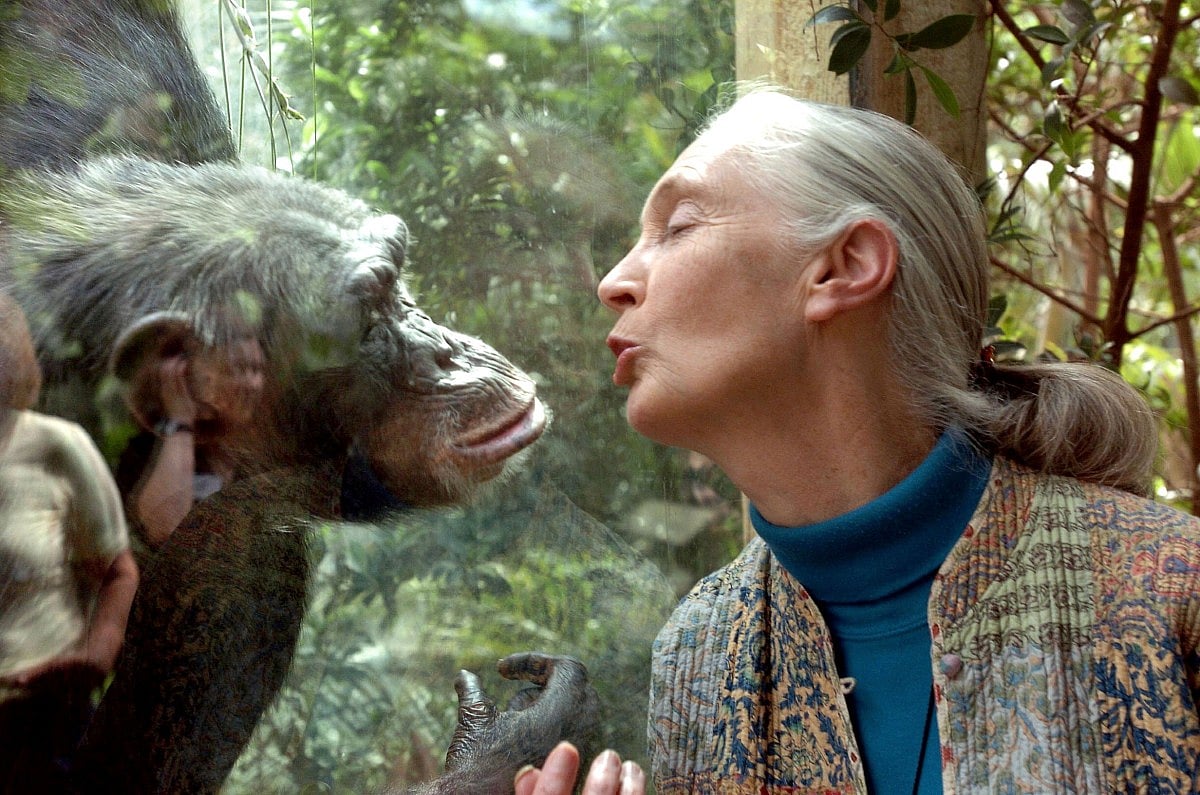Remembering Jane Goodall: The woman who changed how we see the world
The wildlife expert-cum-climate-change advocate was championing change even at 91

She saw the world as it was – and she wanted to change it into the best it could be. Relentless in her pursuit of making a difference, Dr Jane Goodall DBE passed away at 91, during a speaking tour in the US, on October 1. She was in California when she died due to natural causes, confirmed her foundation, The Jane Goodall Institute.
In her later years she was known as an advocate for the protection of the natural world. But she was first noticed by the world back in 1960 when she upended our understanding of the natural world – while in a rainforest reserve at Gombe, in Tanzania, she noticed a chimpanzee using tools to forage and spoon insects into his mouth. It was against everything we had believed – that only humans used tools.
The revelation however did not win her accolades – at first anyway; instead, it drew the ire of ‘scientists’, because she had not been formally trained.
In these early days, ‘the chimpanzee lady’ as she came to be known, spent her days blending in with the denizens of the forest, naming – unusual at the time – and observing their behaviour, which suspiciously mirrored humans in society; they fought for territory, formed familial bonds, and demonstrated emotional and empathetic behaviour towards their young ones.
She was only 26 years old at the time.
One of the most famous photos that perfectly captures her legacy was taken by her late husband, Dutch photographer Hugo van Lawick in 1964 with a chimp she called Flint. In it, she can be seen reaching out her hand to a small, furry animal who copies her gesture. This image and van Lawick’s film People of the Forest: The Chimps of Gombe, "forced science to abandon the idea that humans were the only sentient beings with personalities, minds and emotions", Goodall was quoted as saying by the BBC. "Thus [this image] opened up a whole new way of understanding who animals are and showed that we humans are a part of and not separated from the rest of the animal kingdom."
She stayed on in Gombe, South Africa, for two decades to further her understanding of the chimps. In doing so, she made science more relatable – once a male-dominated field, her excursions, findings, and explanations started to increasingly draw more women to the field of primate studies.
A 2021 review by US anthropologist Michael Lawrence Wilson explains: "Gombe exemplifies what has become a standard approach for primate field studies: collaborative research, collecting systematic information on identified individuals, followed throughout their entire lives.”
Early kinship
Valerie Jane Morris-Goodall, who is best known as Jane Goodall, was born in the UK on April 3, 1934, to Margaret (Vanne) Myfanwe Joseph and Mortimer (Mort) Herbert Morris-Goodall. Her love for the wild began with a stuffed chimpanzee given to her by her father, which she treasured for the rest of her days. She was also a fan of the Tarzan books. Anecdotes about her childhood paint a picture of a sensitive soul who worked tirelessly to help wounded animals.
By the time she was 23, she had worked as a waitress and a secretary, but her passion for animals had not waned. A phone call with paleoanthropologist Louis Leakey would change her life at this point. He was so impressed with their chat that he offered to support a trip to Tanzania, where she could study chimpanzees.
She would go on to earn her Ph.D from the University of Cambridge and share her observations through papers and books, documentaries, and talks.
In 1977, she founded The Jane Goodall Institute, which aids research and conservation efforts around the world. And by 1991, she had founded the nonprofit Roots & Shoots, an initiative that championed conservation for a better future.
Her most recent talk was during New York Climate Week 2025 in September, where she spoke to media about protecting the earth. Her message was clear, says a post on her Jane Goodall Institute Instagram handle. “The climate crisis is the greatest challenge of our time — but if we act with courage and hope, change is still possible.”
The quote sums up Goodall perfectly: she saw the world as it is, warts and all. And she worked to make it better.
Sign up for the Daily Briefing
Get the latest news and updates straight to your inbox
Network Links
GN StoreDownload our app
© Al Nisr Publishing LLC 2025. All rights reserved.